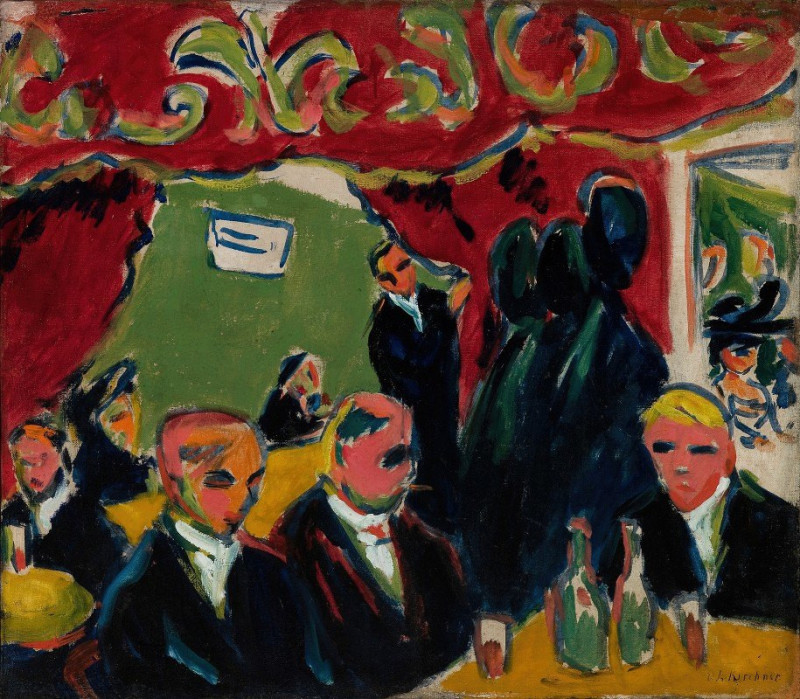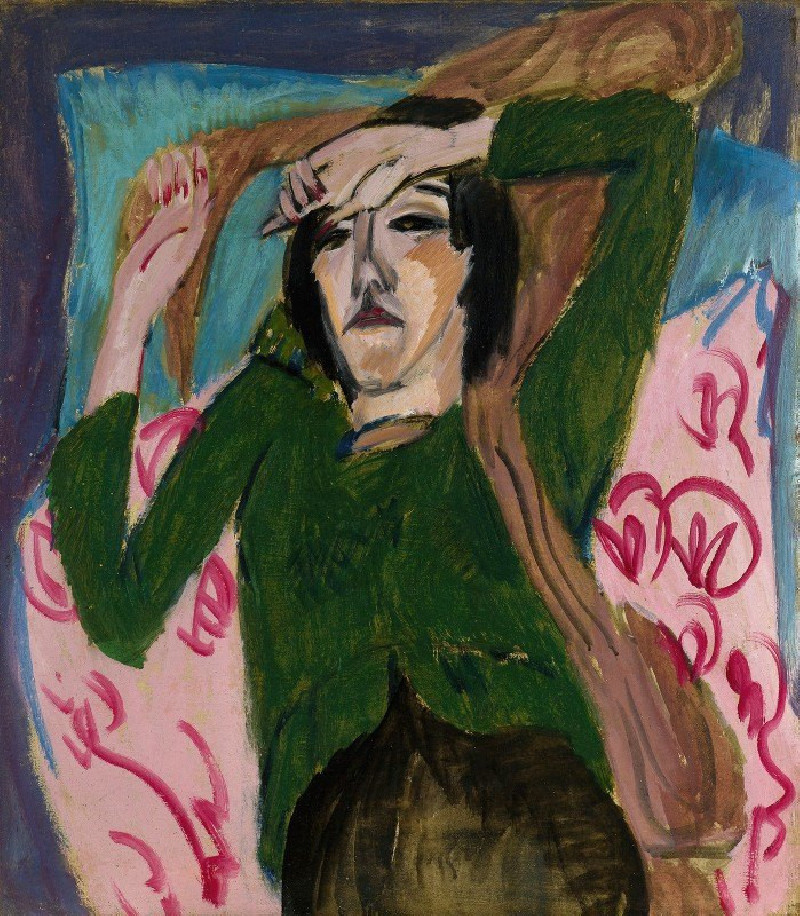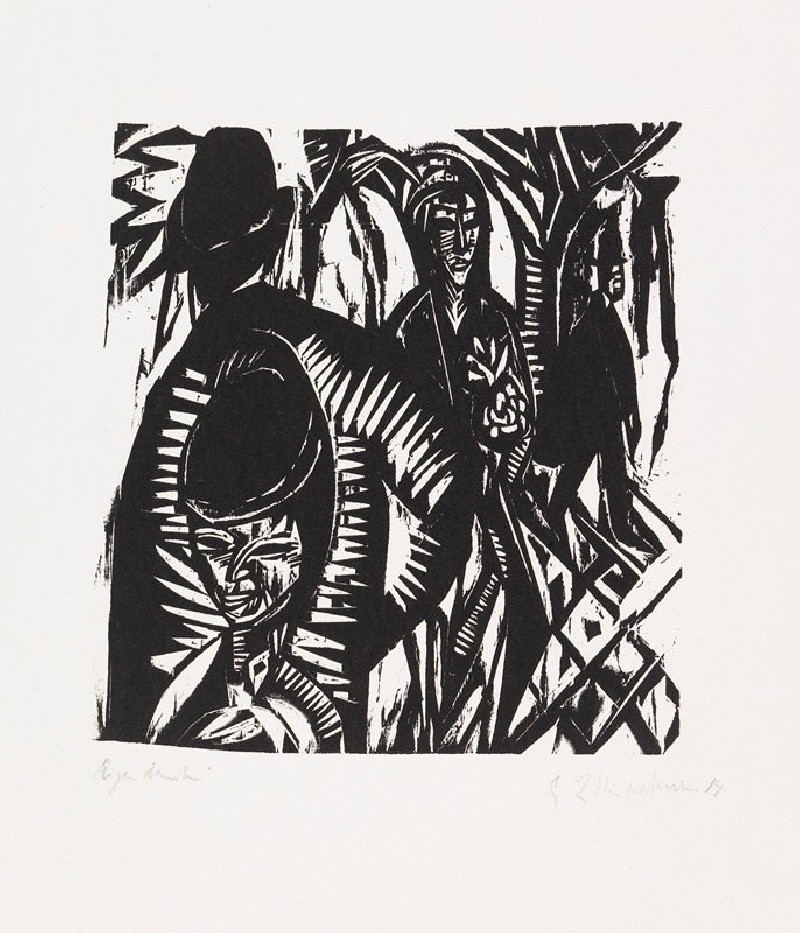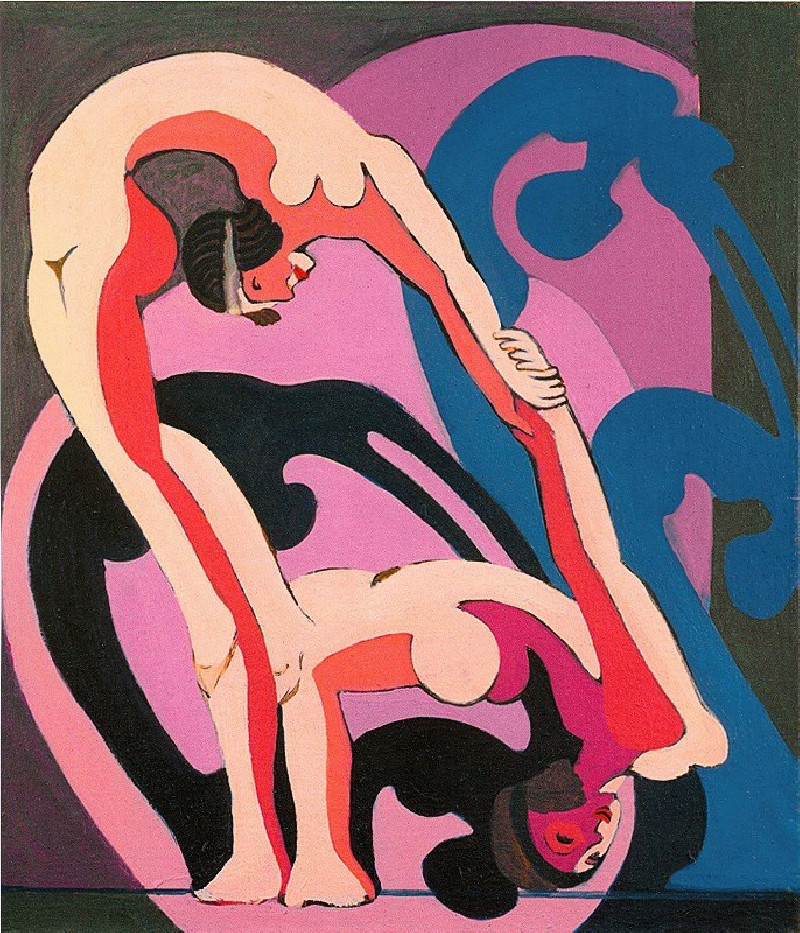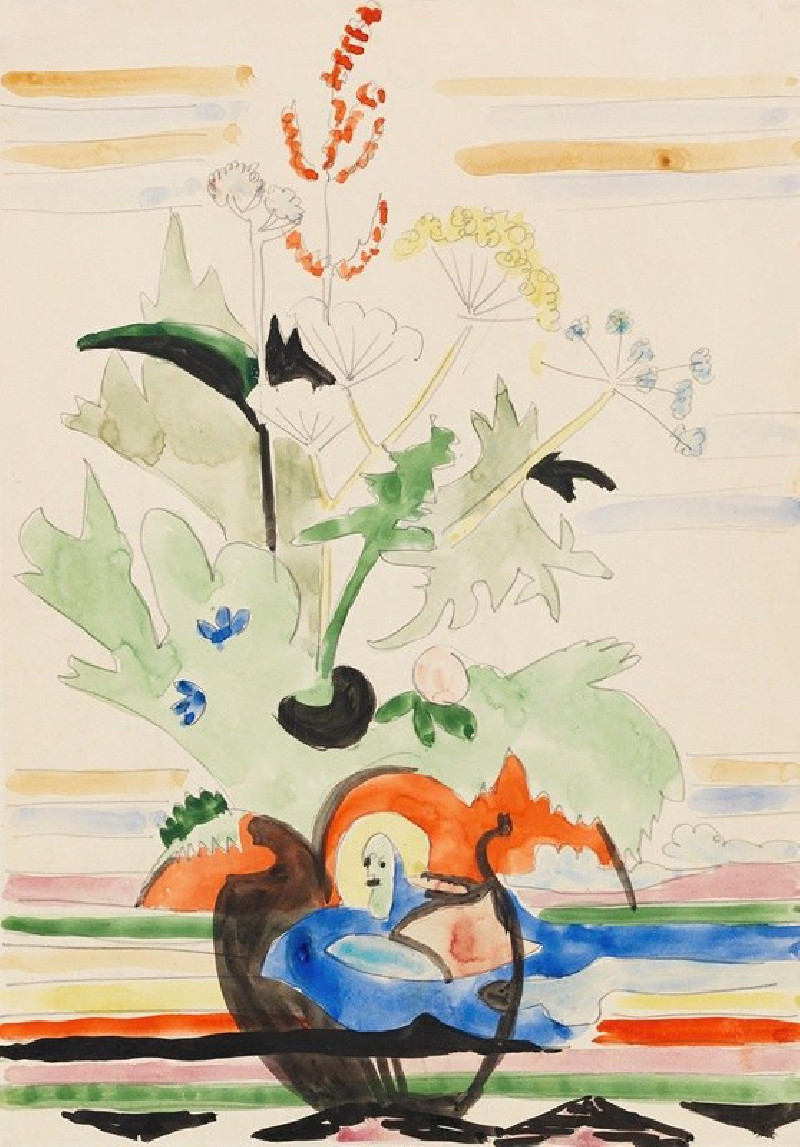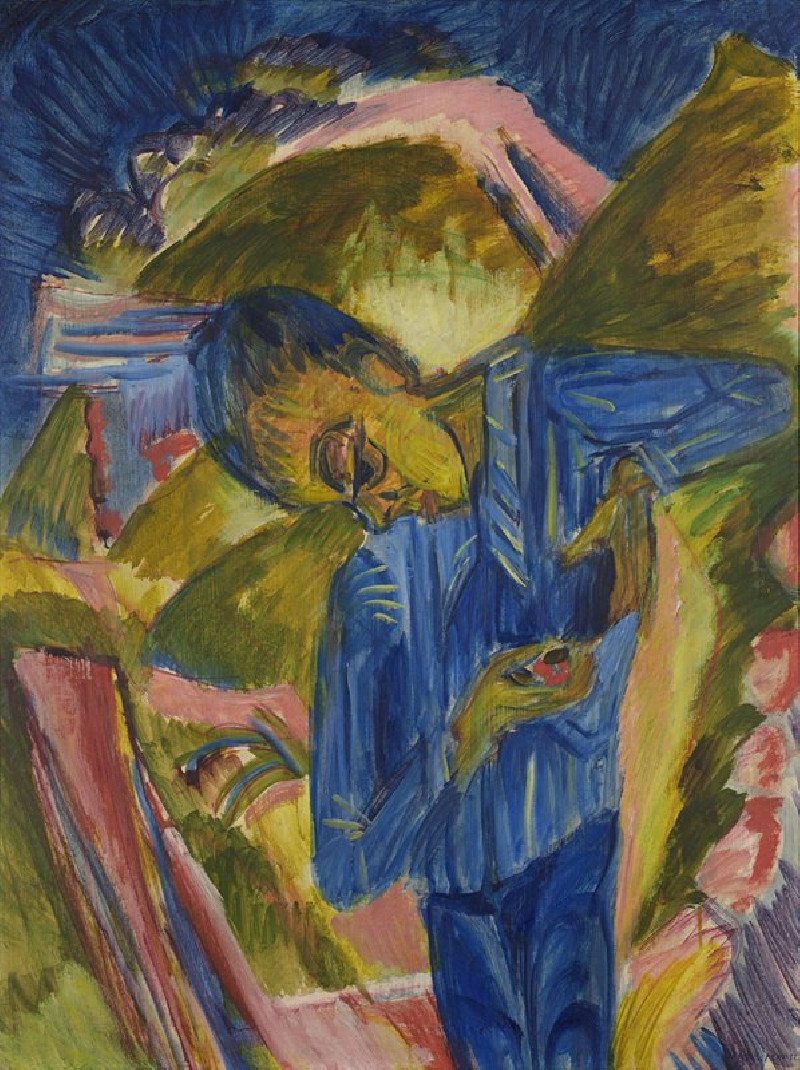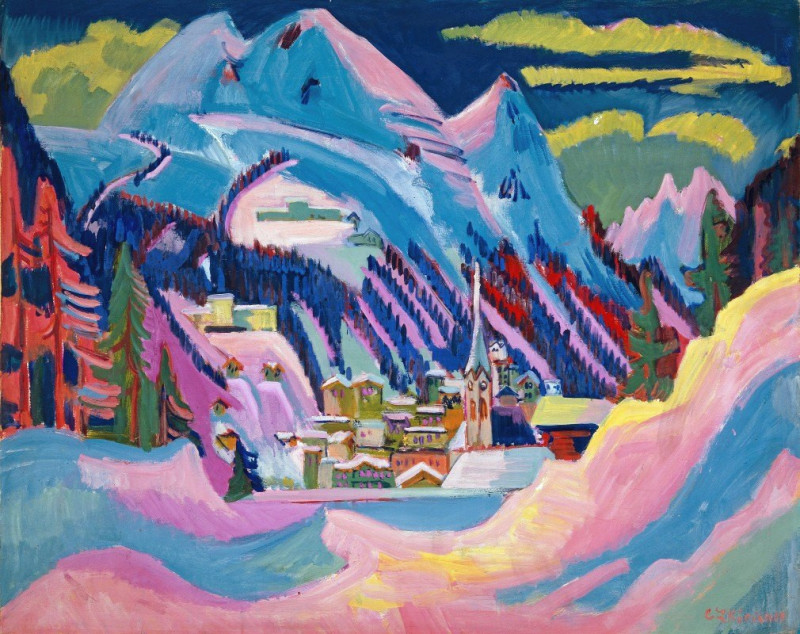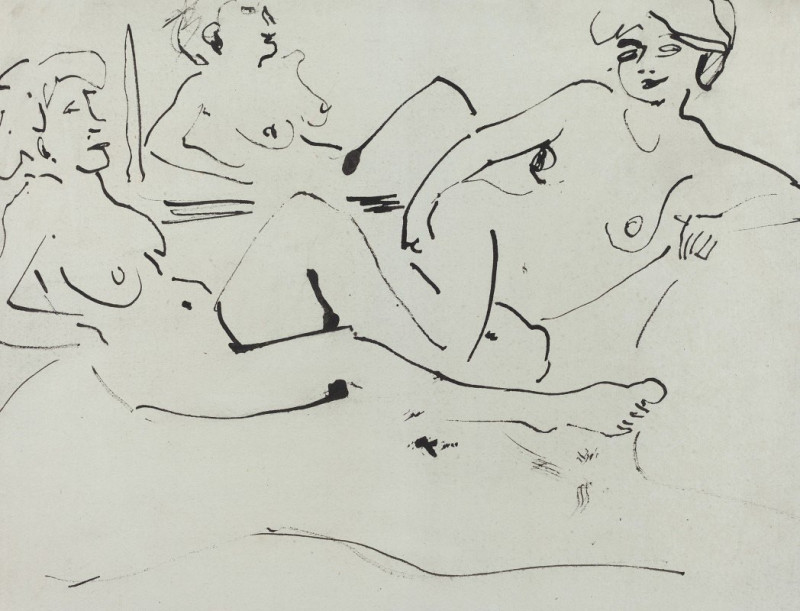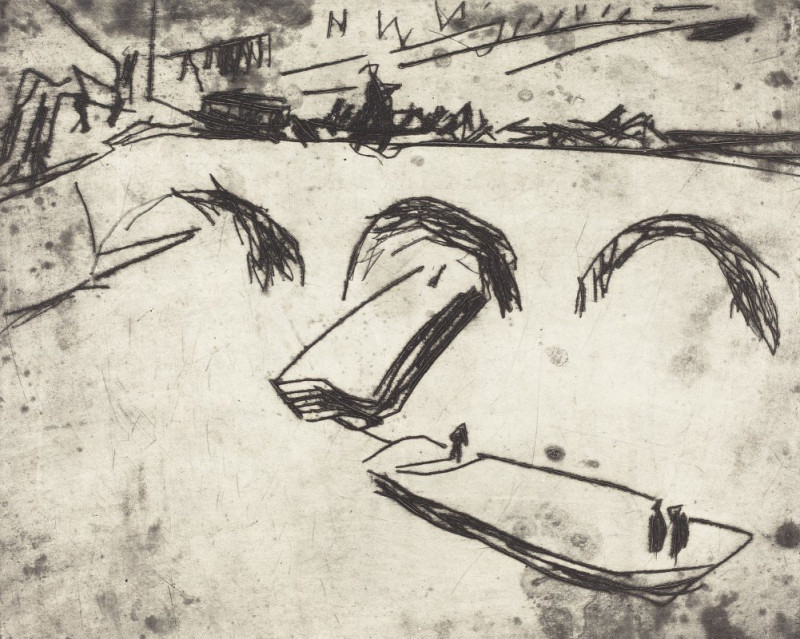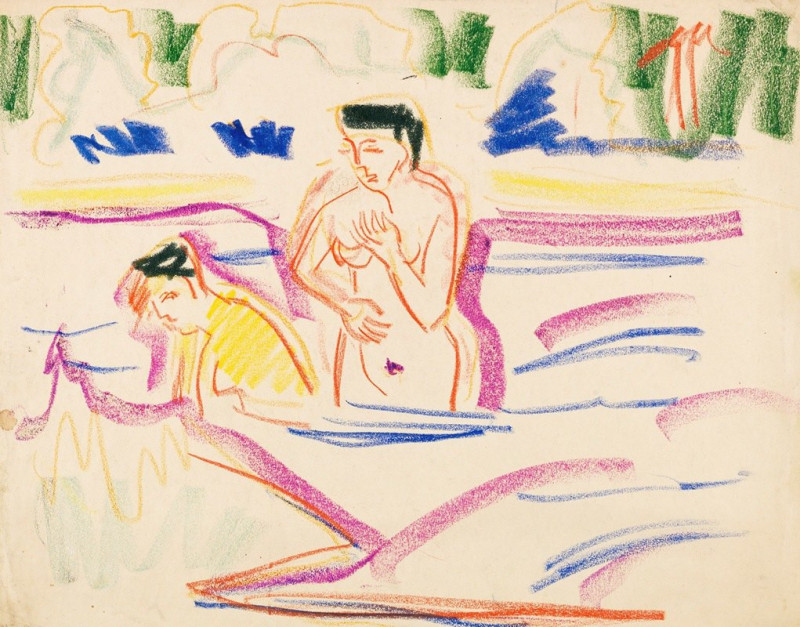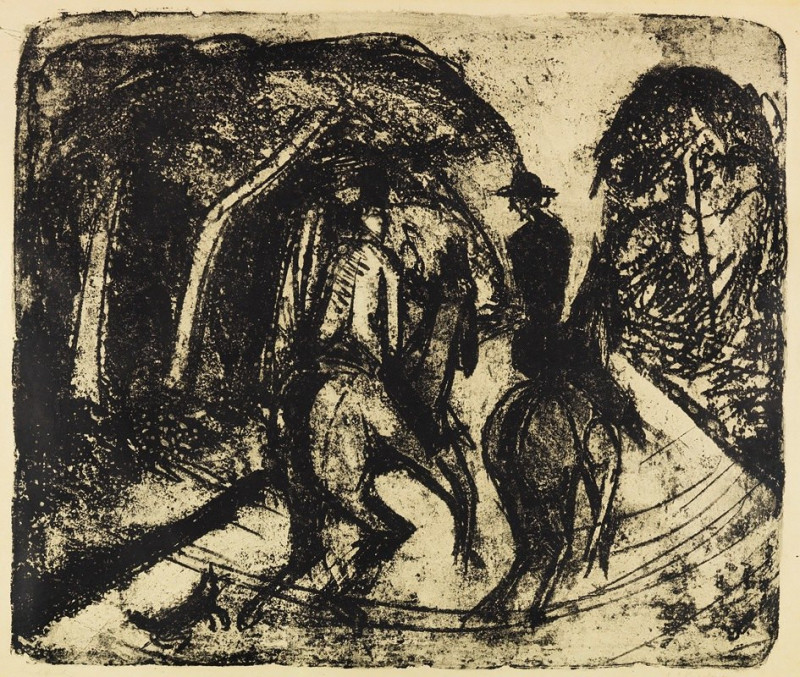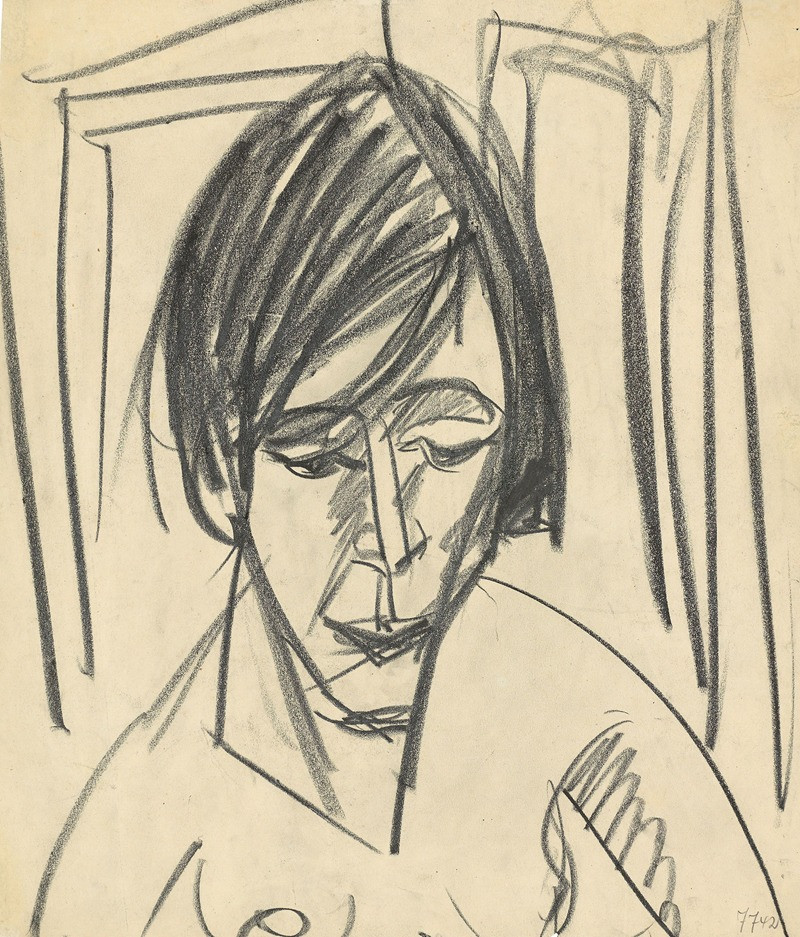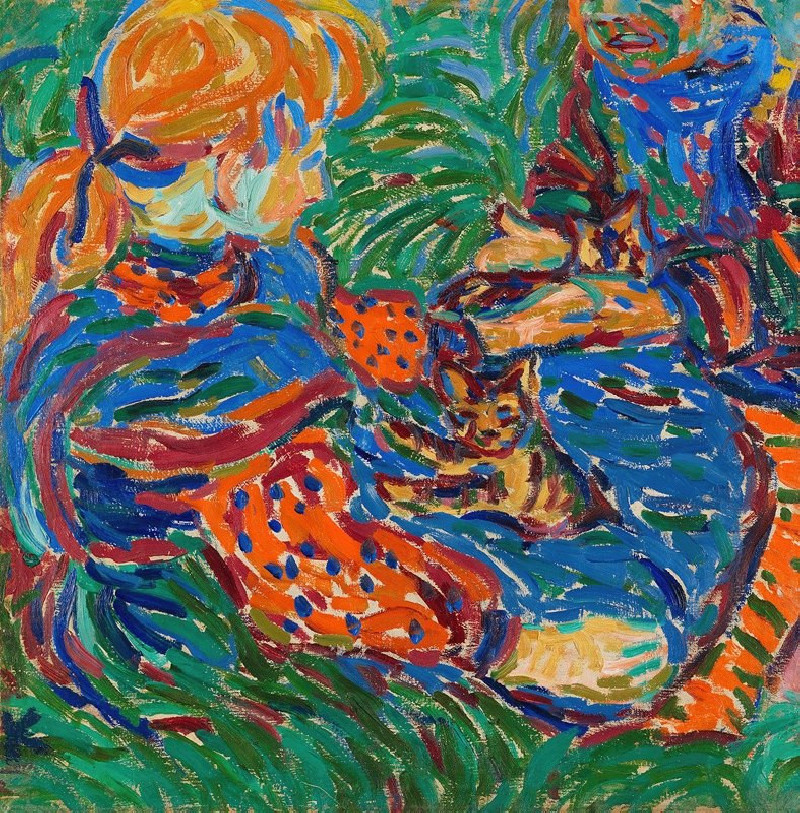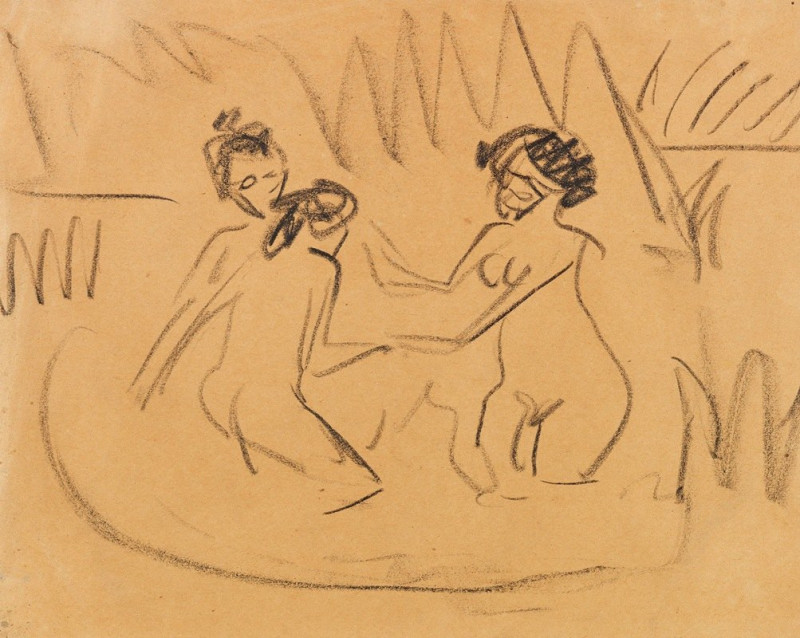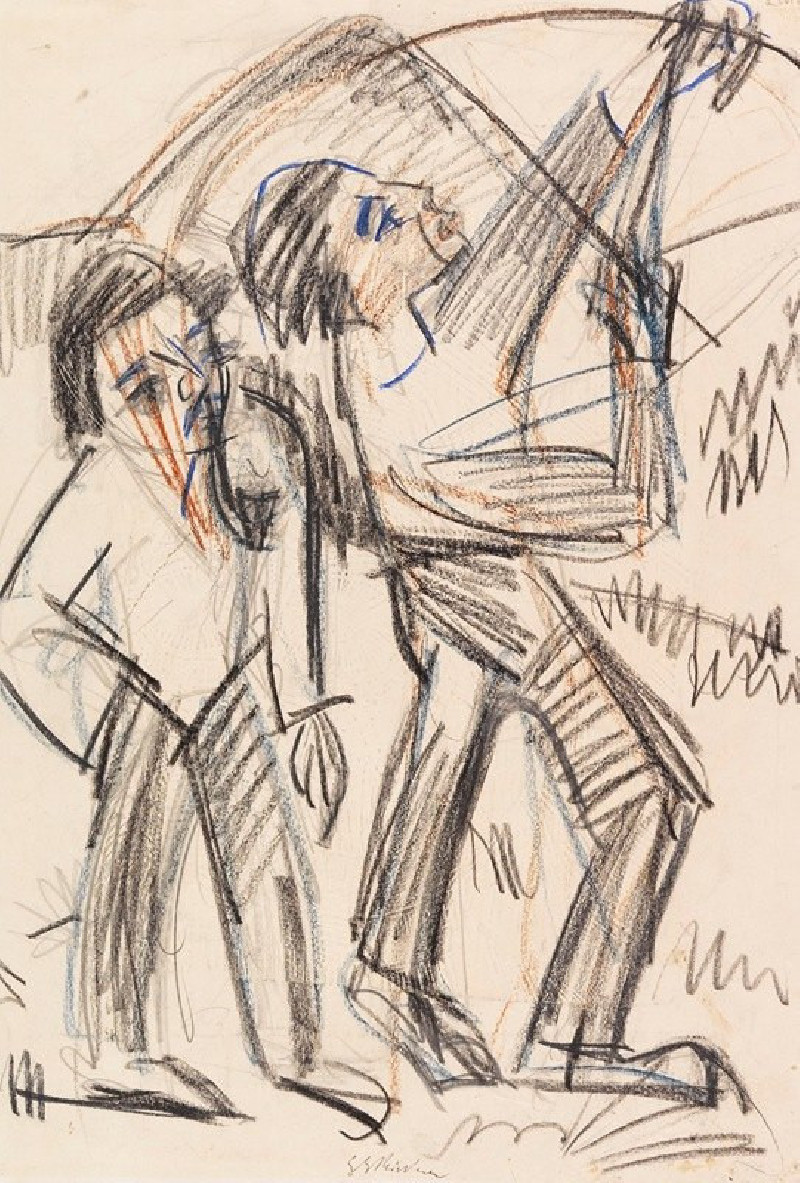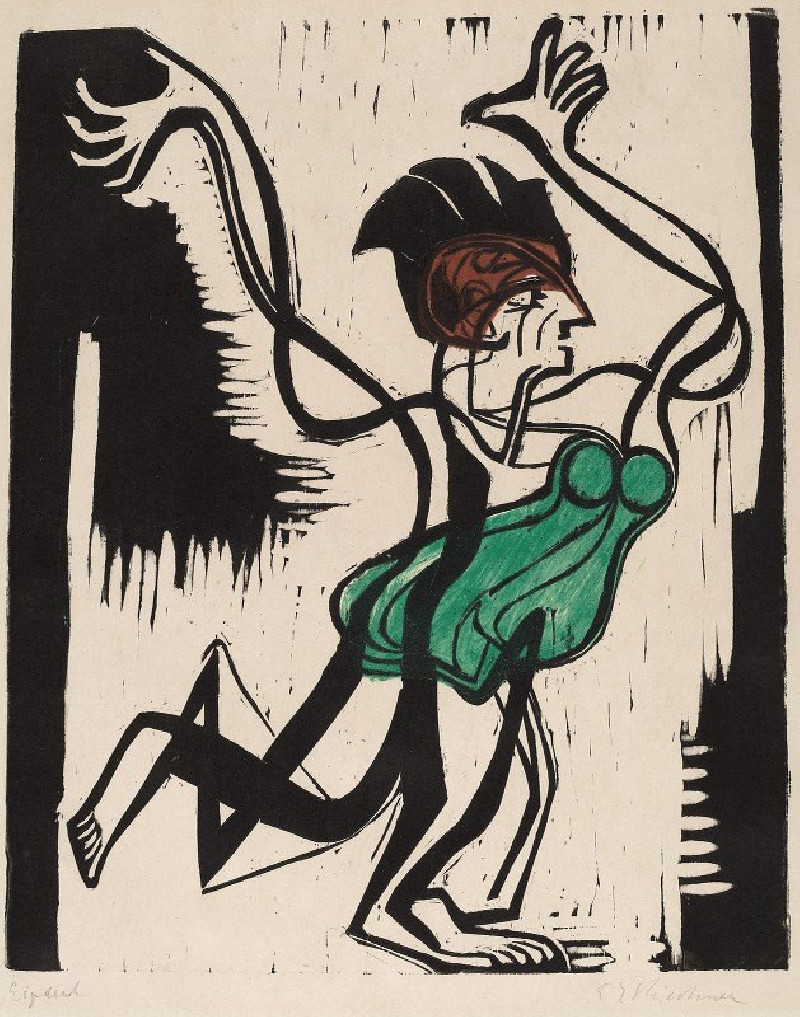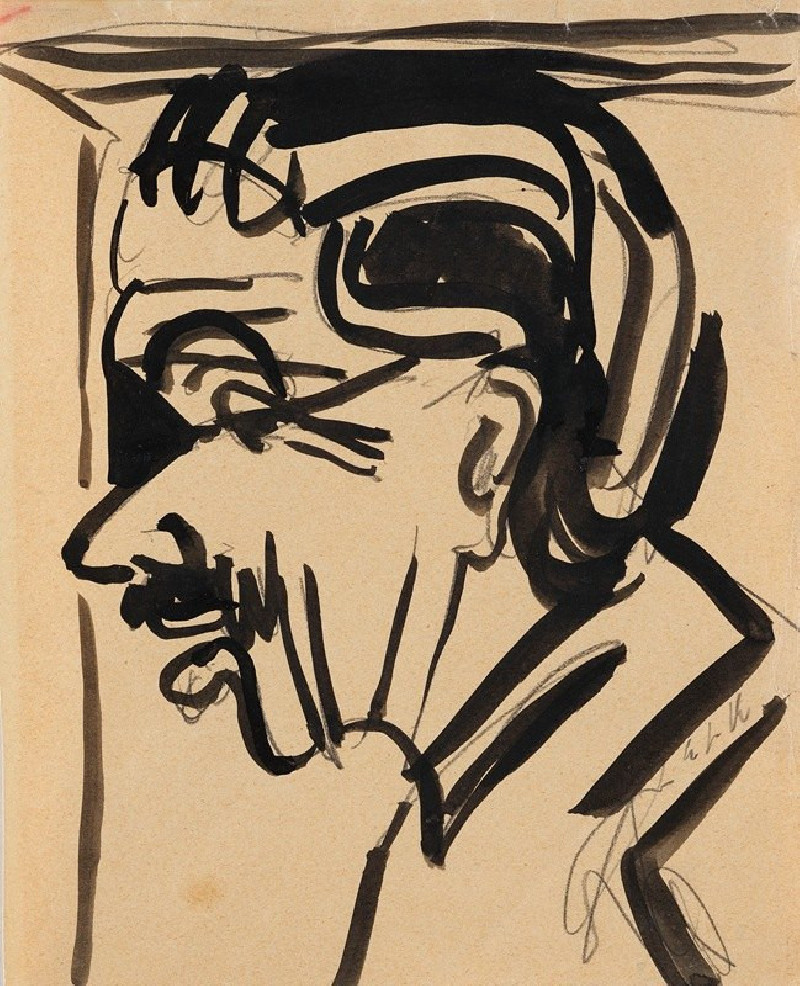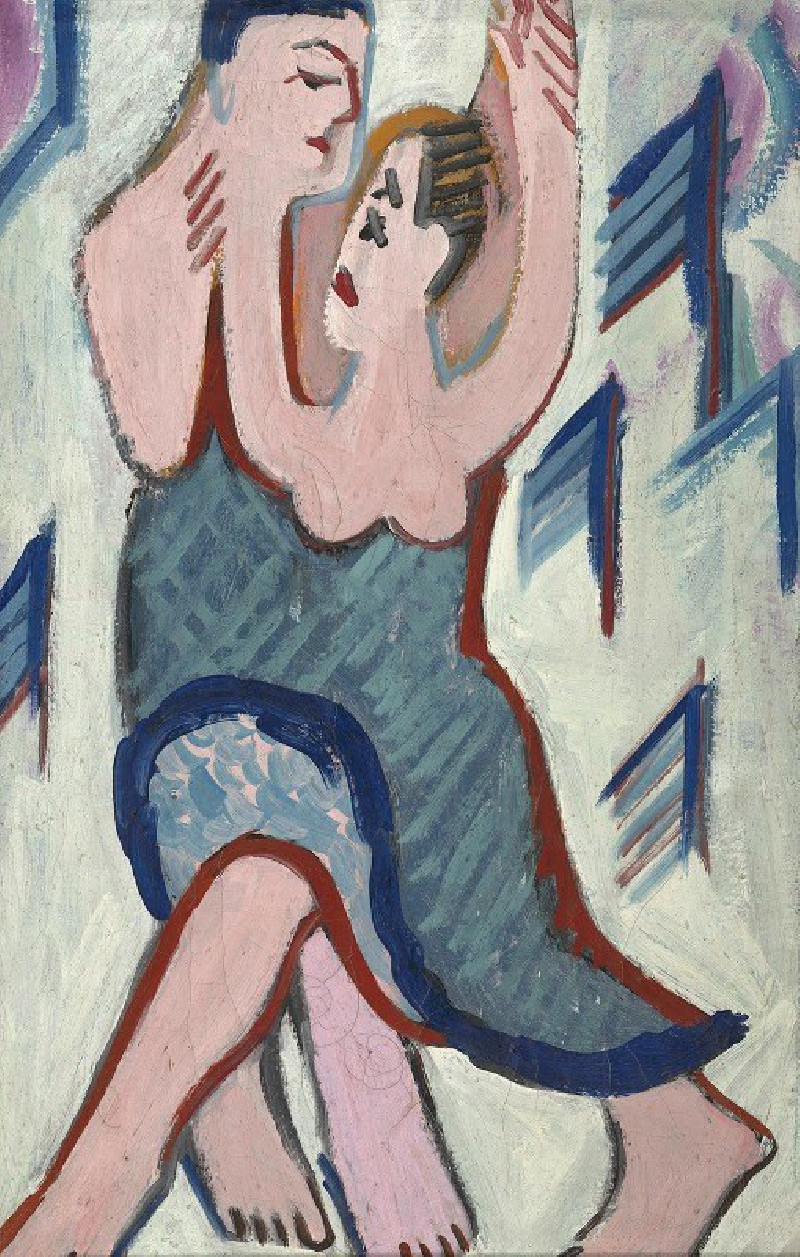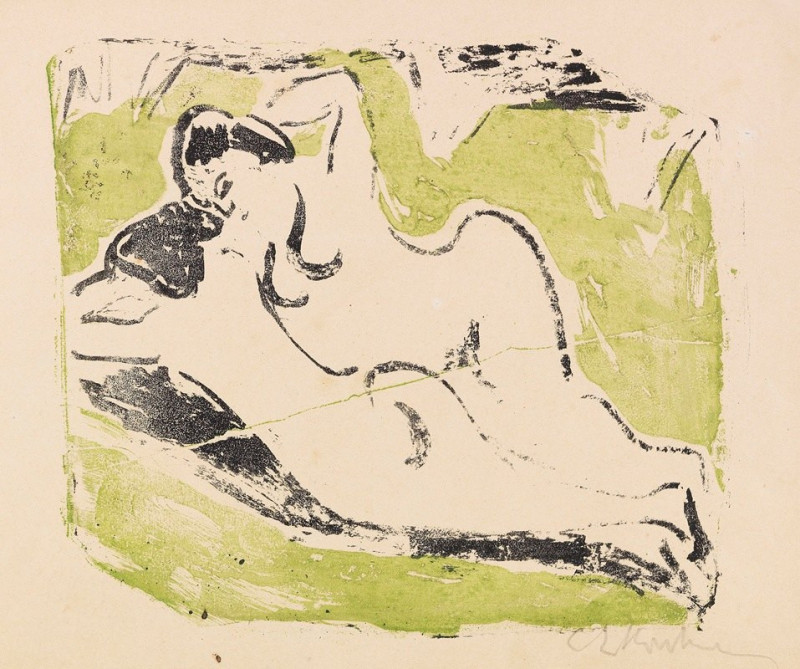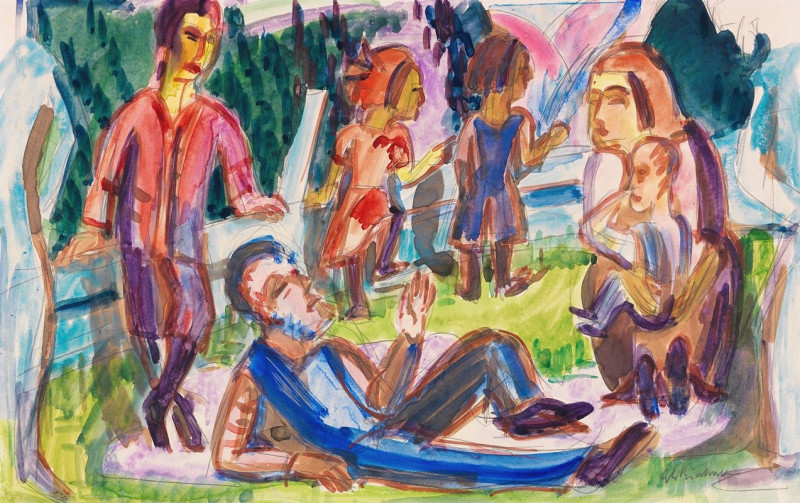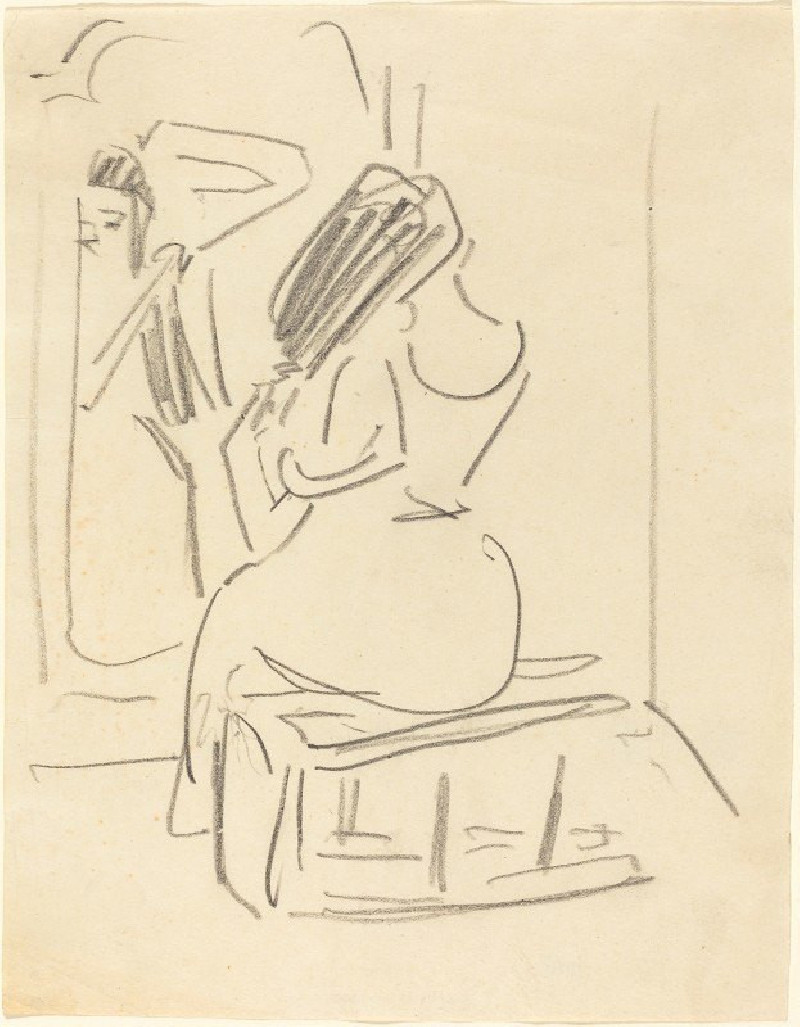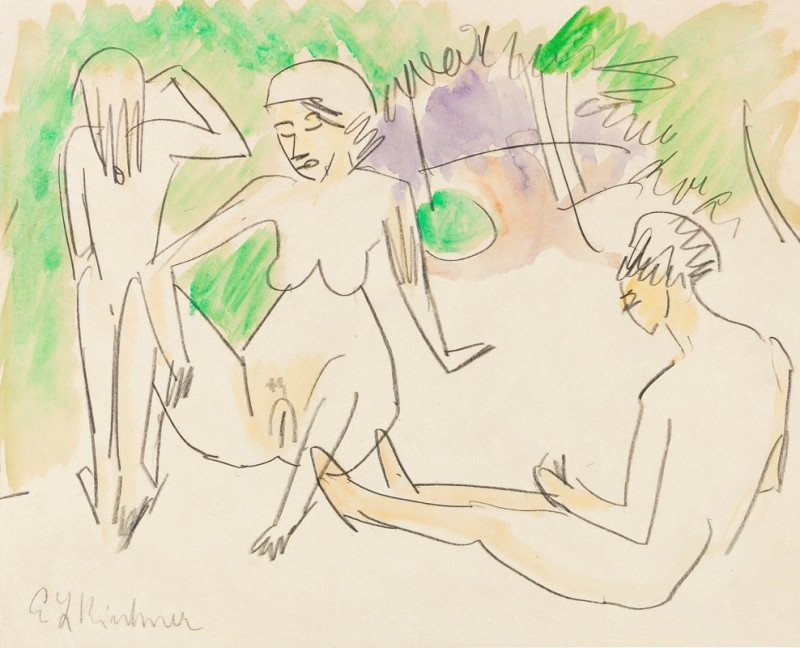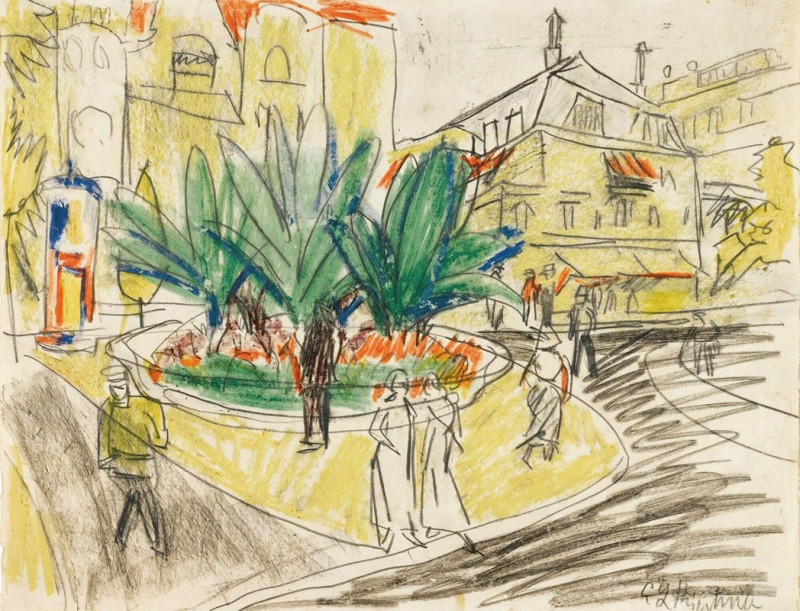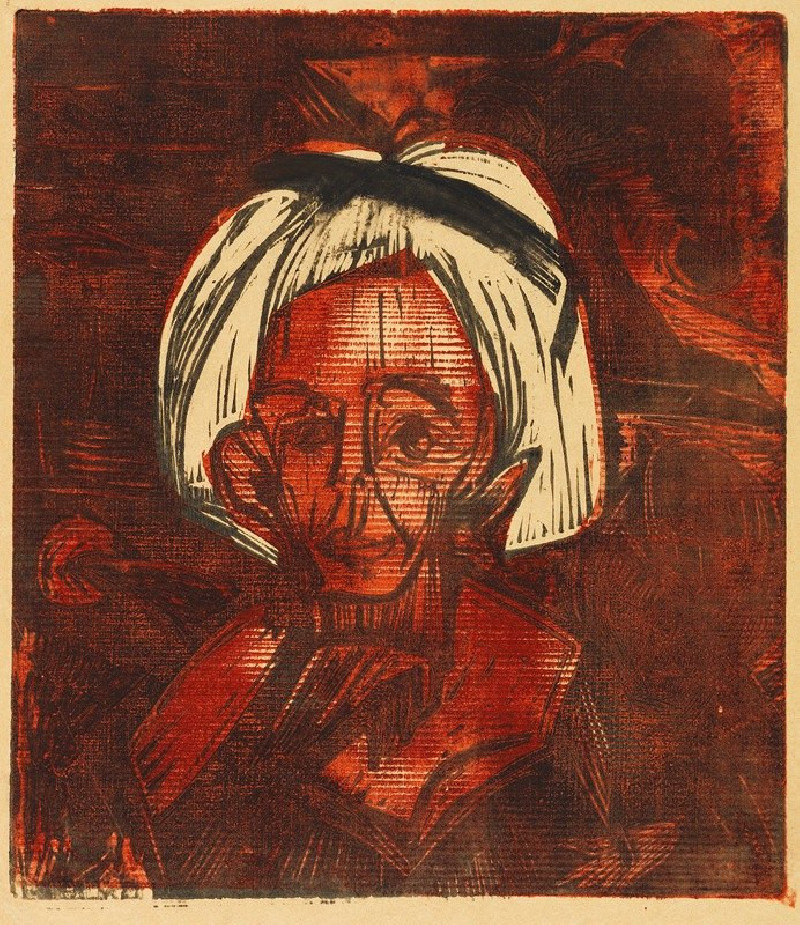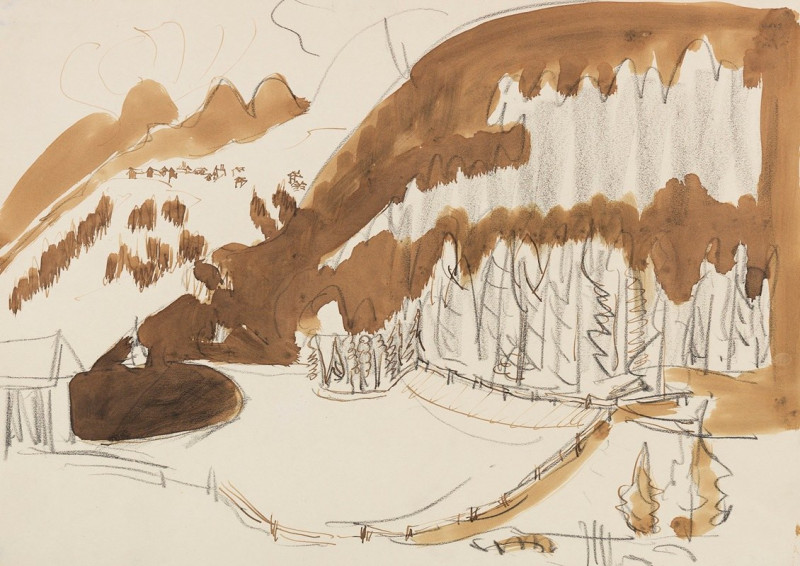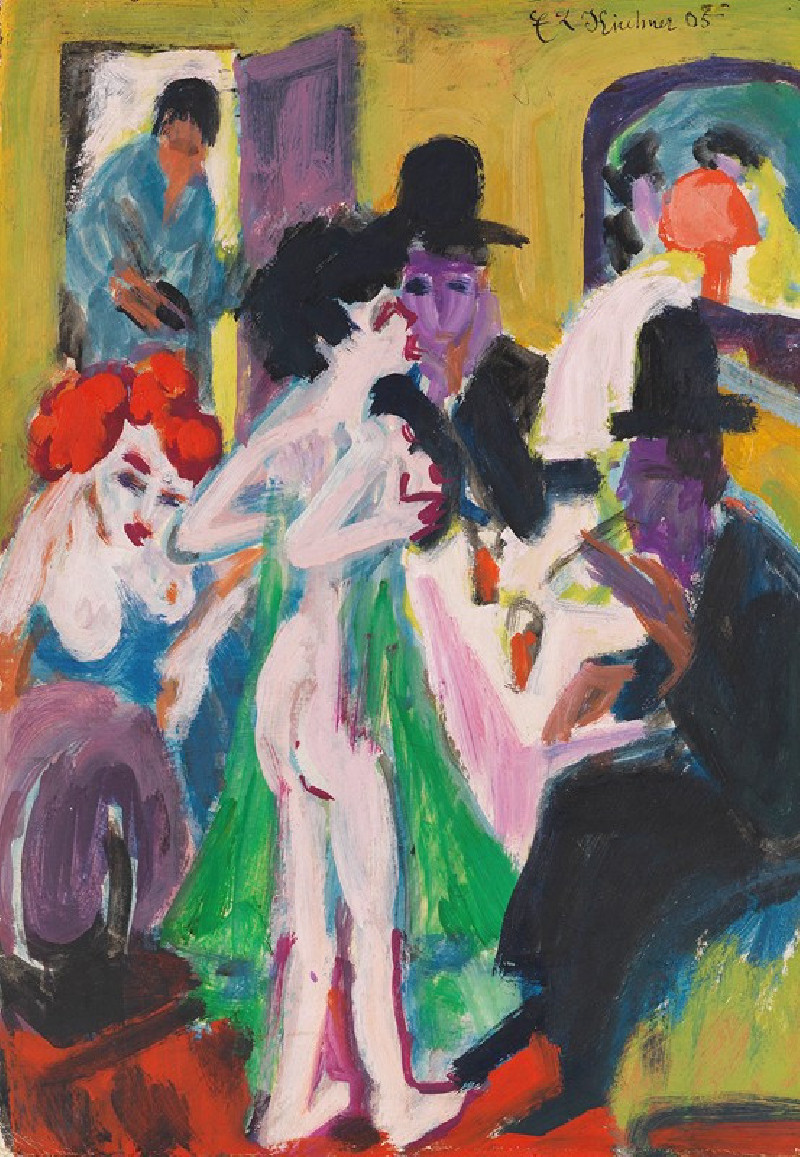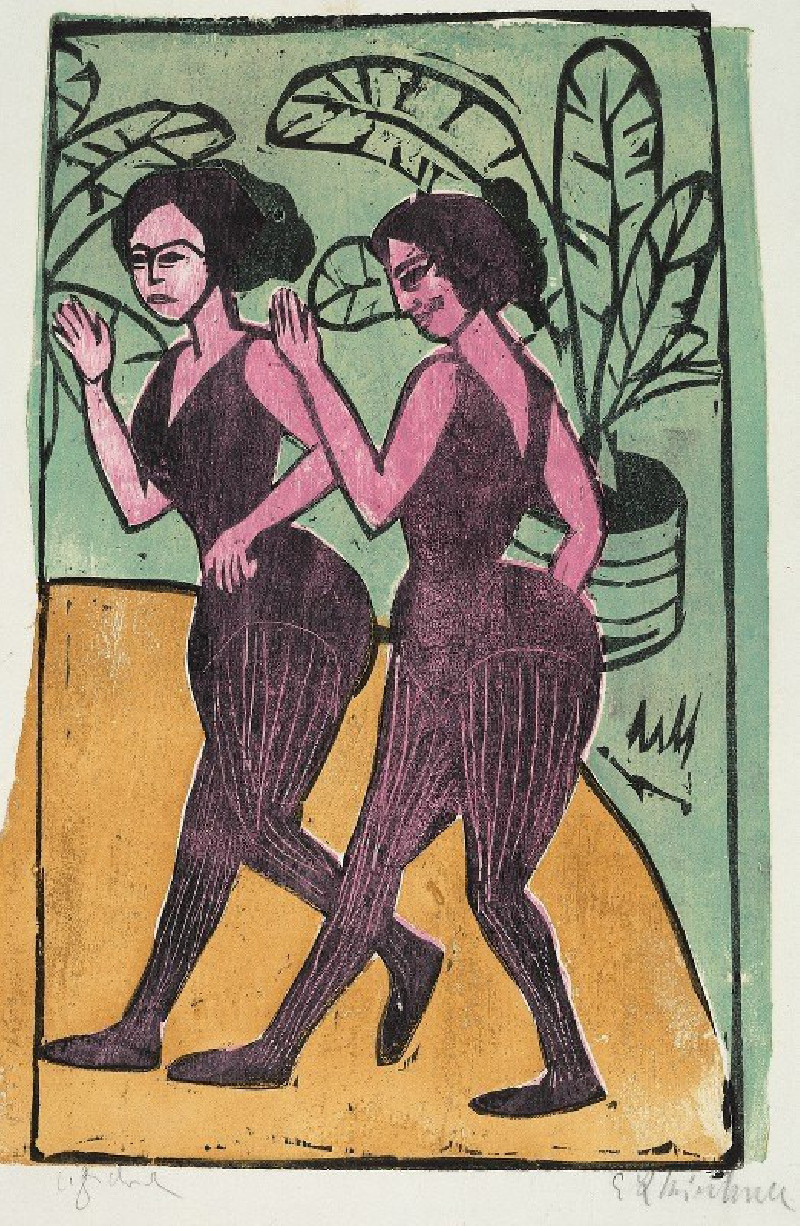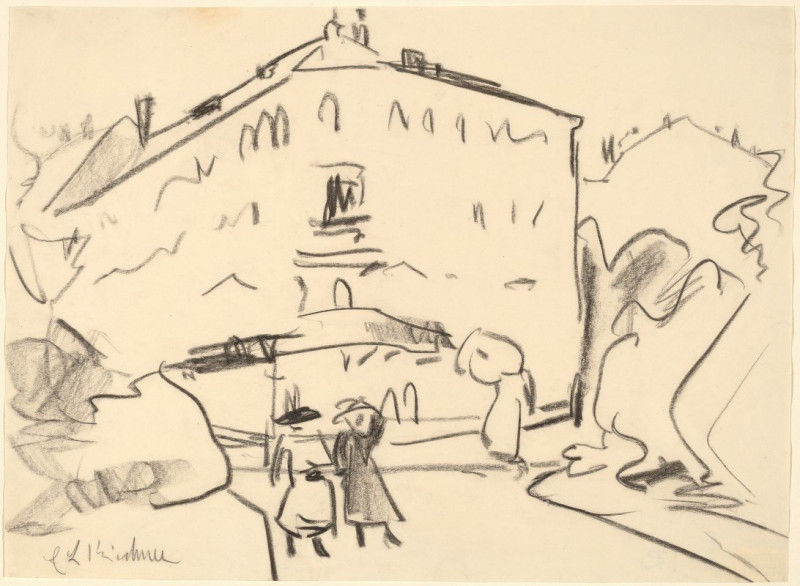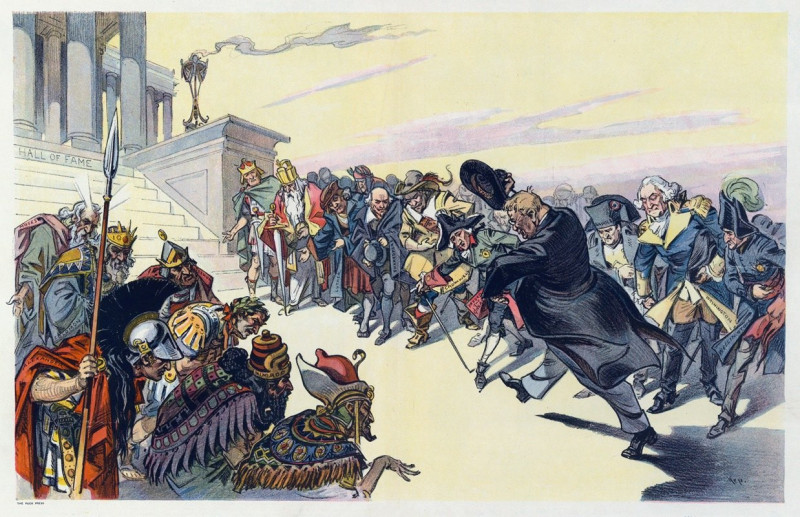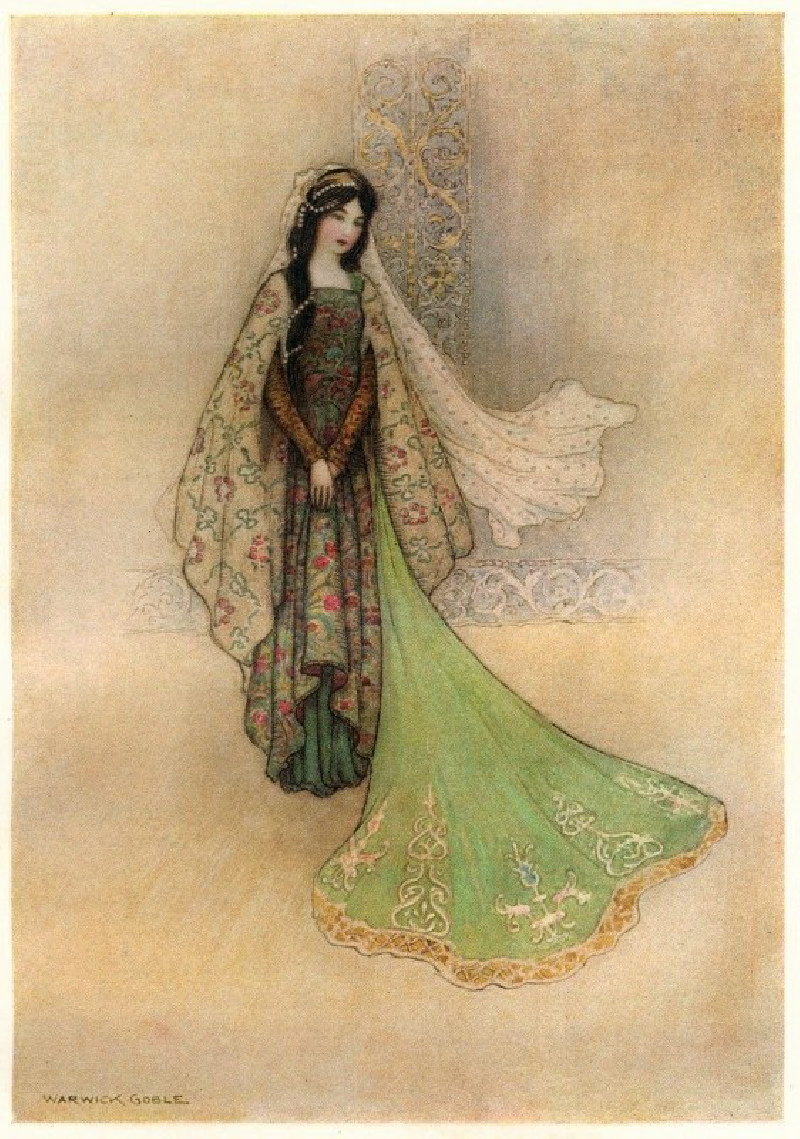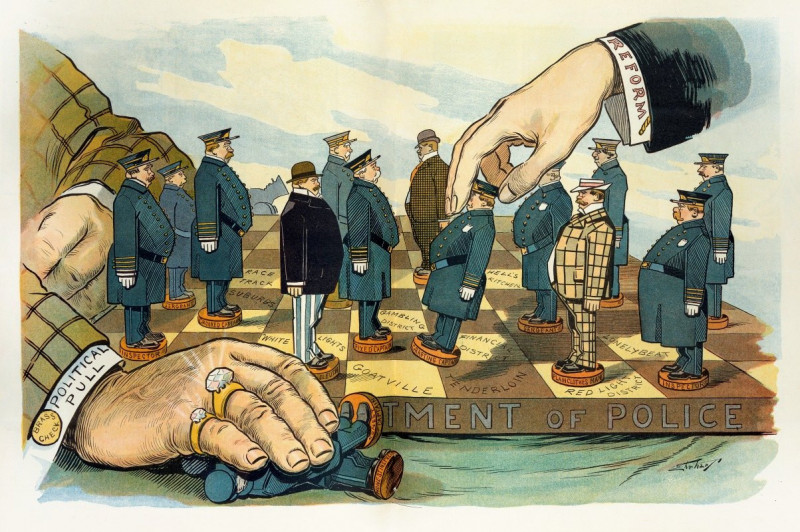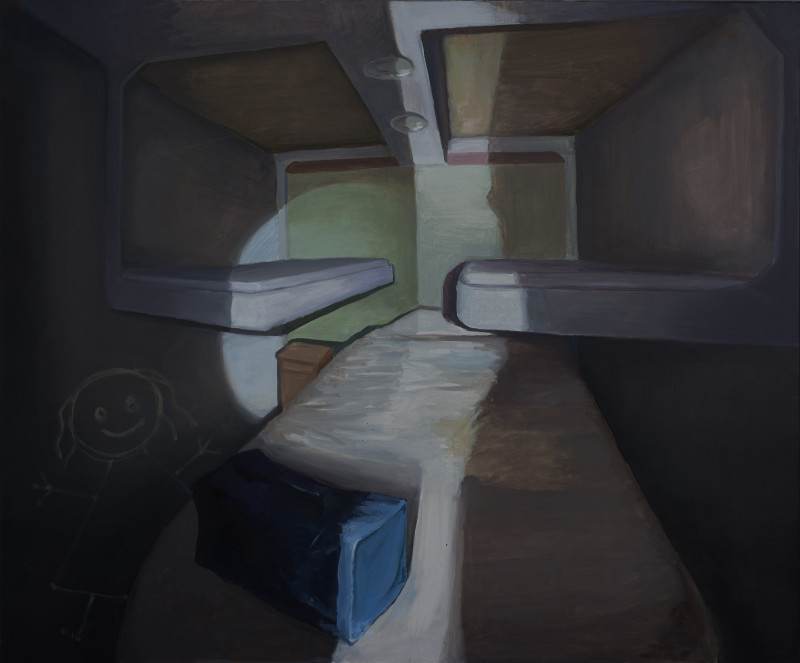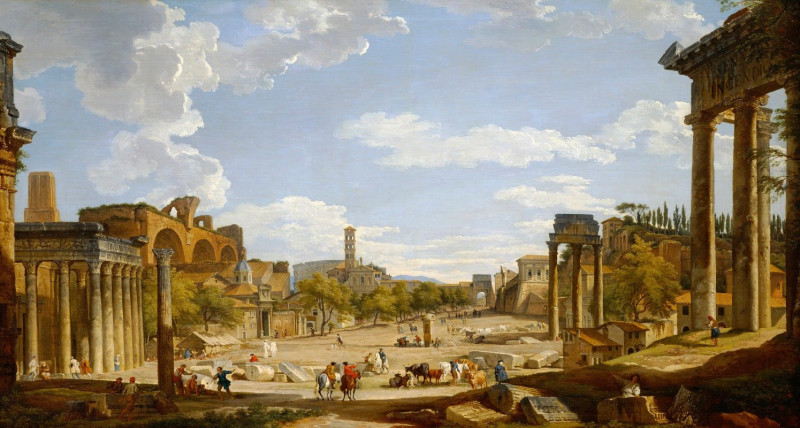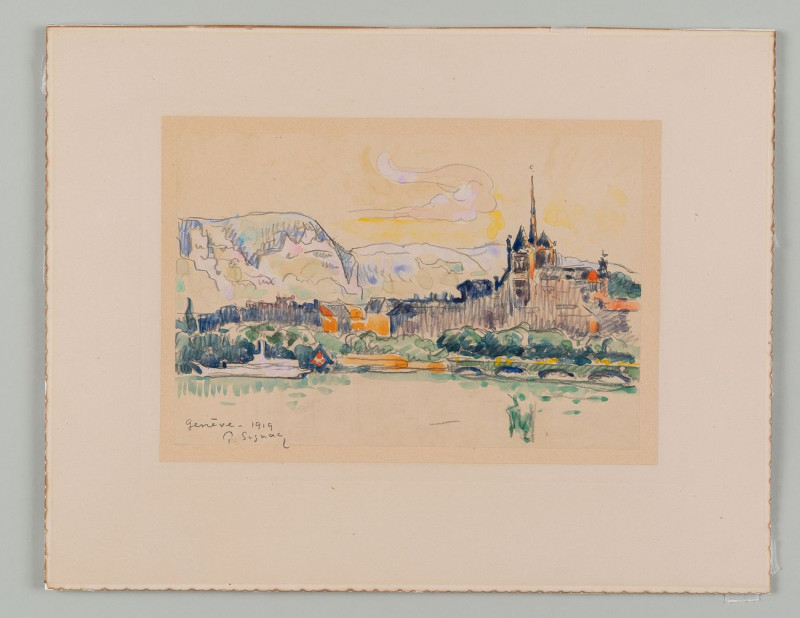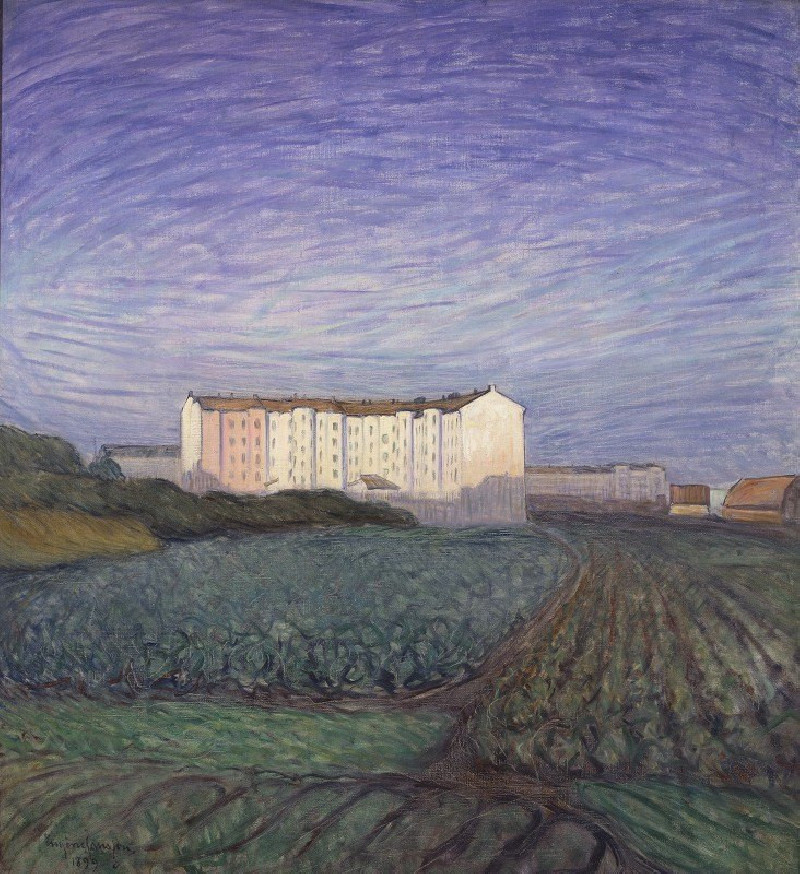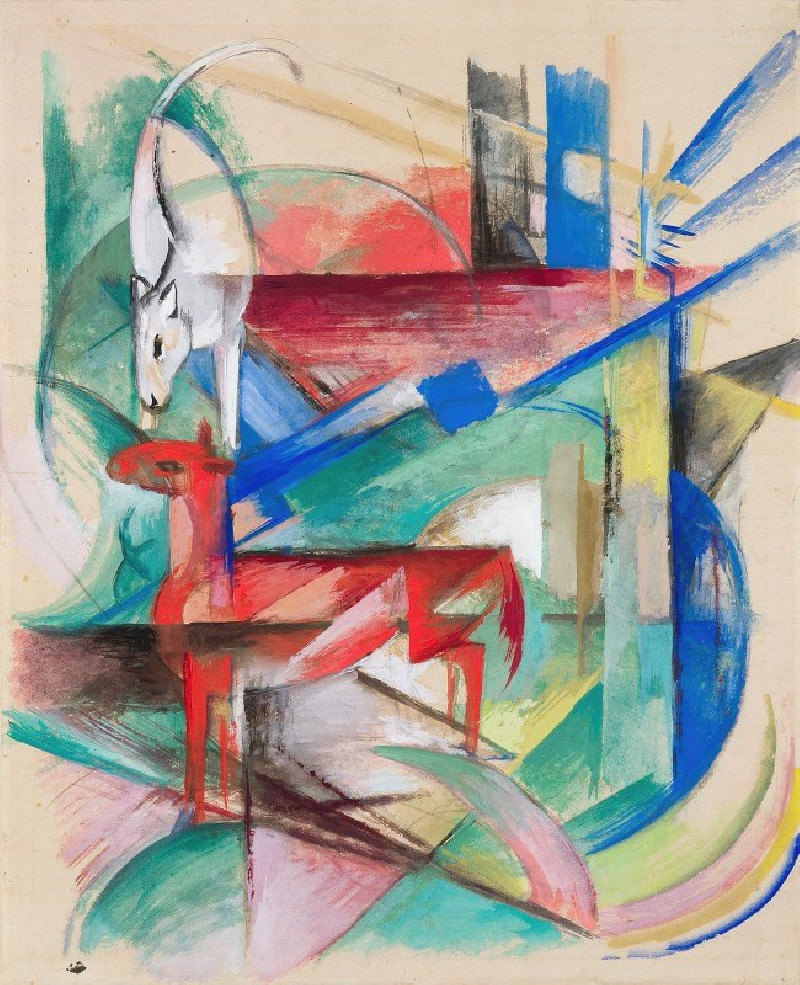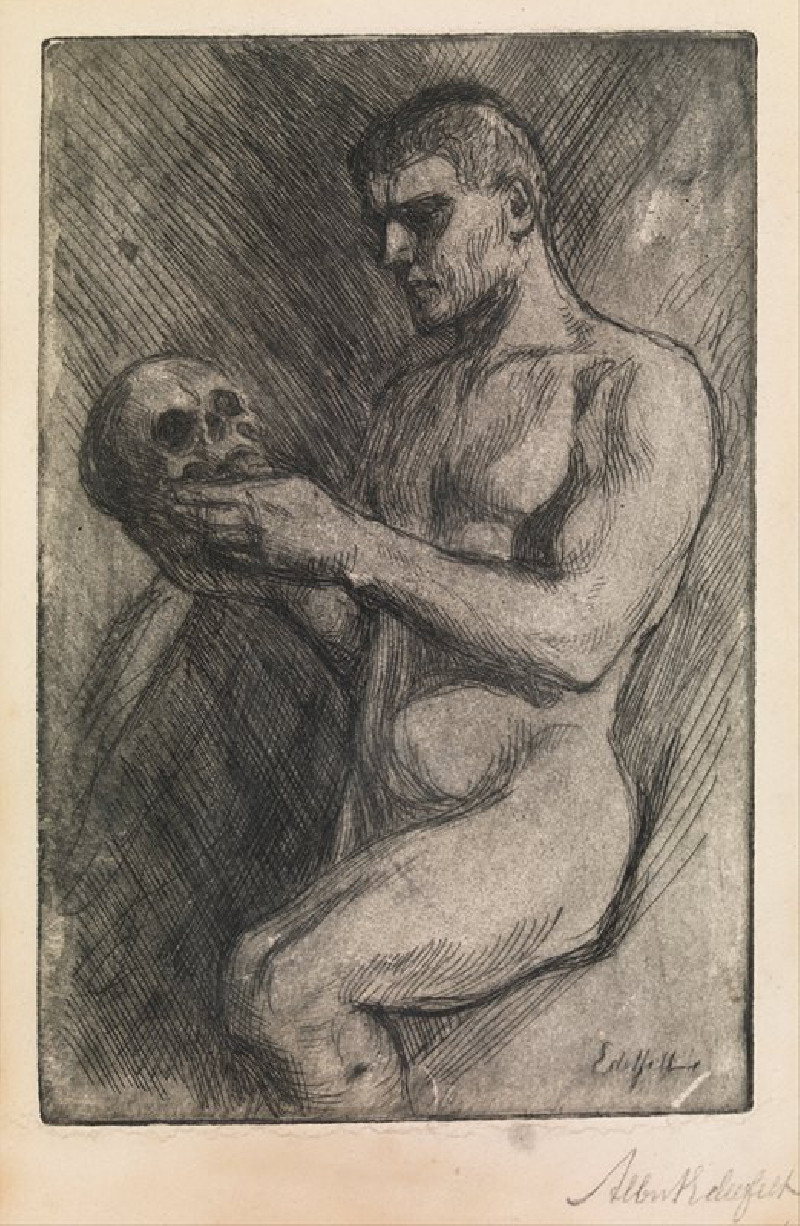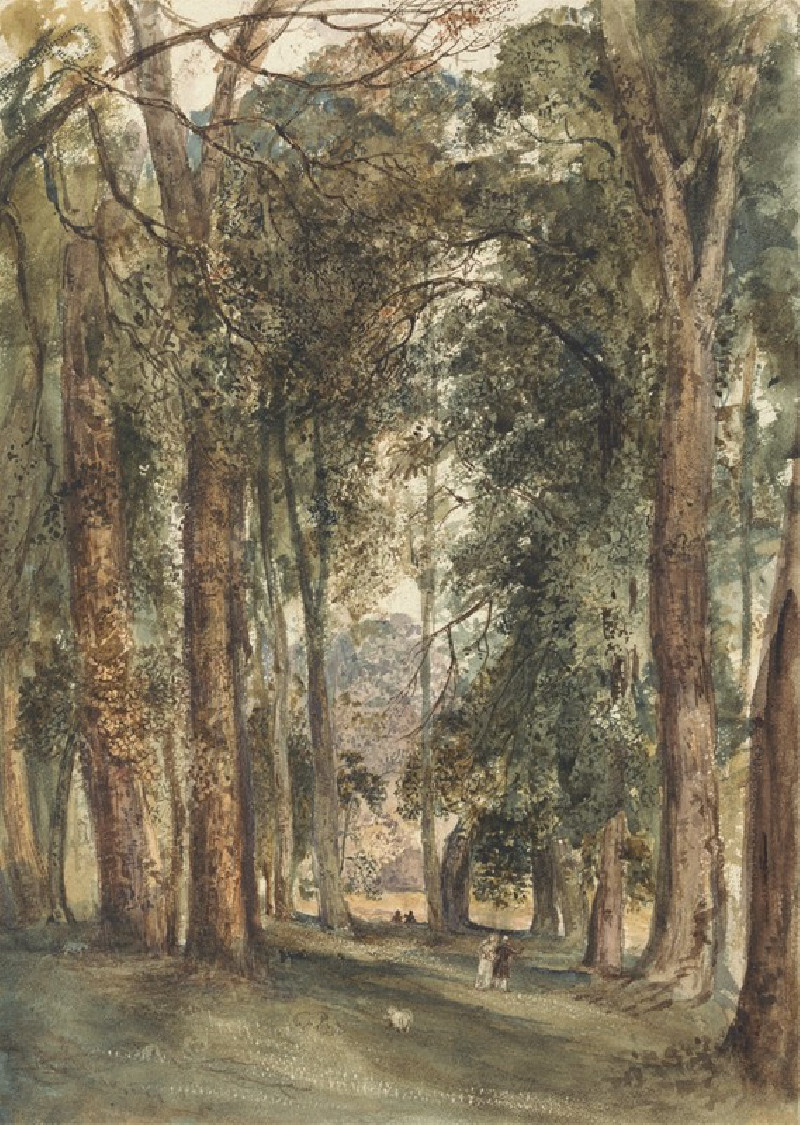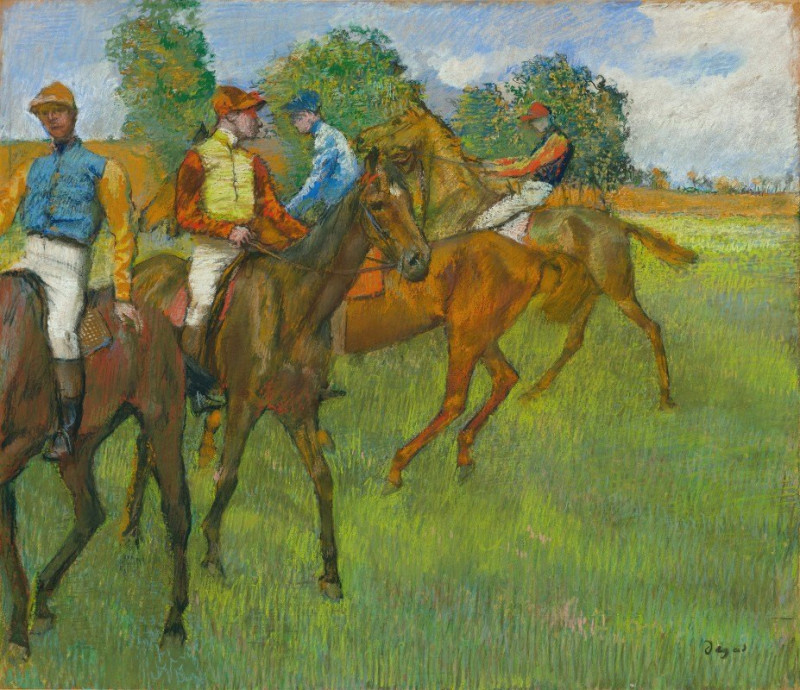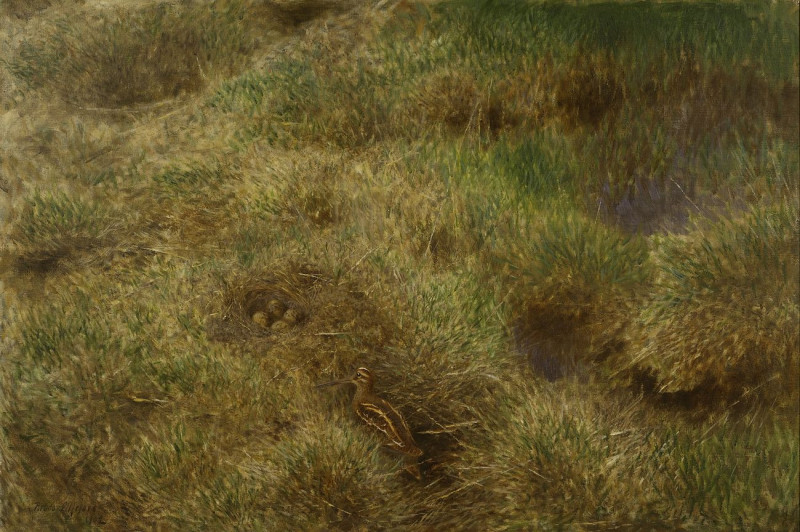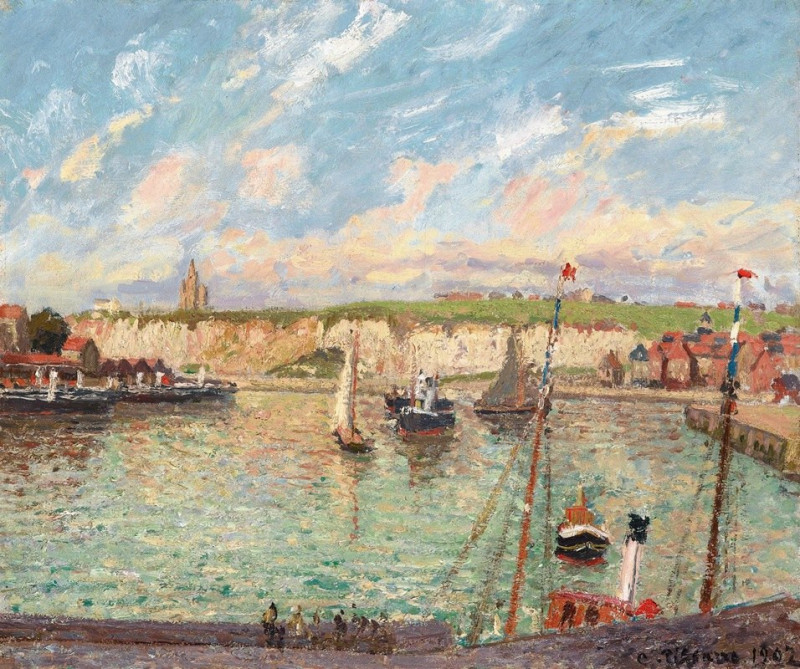Tavern (c.1909)
Technique: Giclée quality print
Recommended by our customers
More about this artwork
Tavern (c.1909) by Ernst Ludwig Kirchner captures the dynamic atmosphere of a bustling social scene through its distinctive expressionist style. In this painting, Kirchner employs bold and swift brushstrokes paired with starkly contrasting colors to convey the lively and perhaps somewhat chaotic ambiance of a tavern. The scene is populated by figures whose faces are rendered with minimal detail, yet strikingly colored in hues of green, red, and yellow, evoking their animated interactions and the vibrant nightlife.The background is dominated by a large red and green decorative canopy that hangs over the patrons, adding to the sense of a cloistered and intimate environment. This shielding element contrasts vividly with the starkness and simplicity of the central green table, where bottles and glasses suggest ongoing leisure and consumption.Kirchner's technique of blending abstraction with figural representation places Tavern as a significant example of early 20th century German Expressionism, where the emotional effect of the scene is felt through the visual impact of color and form rather than through detailed realism.
Delivery
Returns
Ernst Ludwig Kirchner (1880–1938) was one of the most important German Expressionist painters. He was a co-founder of Die Brücke, a group of German expressionist artists formed in Dresden in 1905. Die Brücke and Kirchner took inspiration from Vincent Van Gogh and Edvard Munch, as well as African and Oceanic art. They used woodblock printing as a medium to showcase their signature style: flat, unrealistic images with vivid colors. The recurring themes in Kirchner's artworks included exotic cultures, faraway landscapes, self-portraits, dancers and Berlin street life. His paintings and prints effectively portrayed non-European cultures despite the fact that he never traveled outside of Europe.

